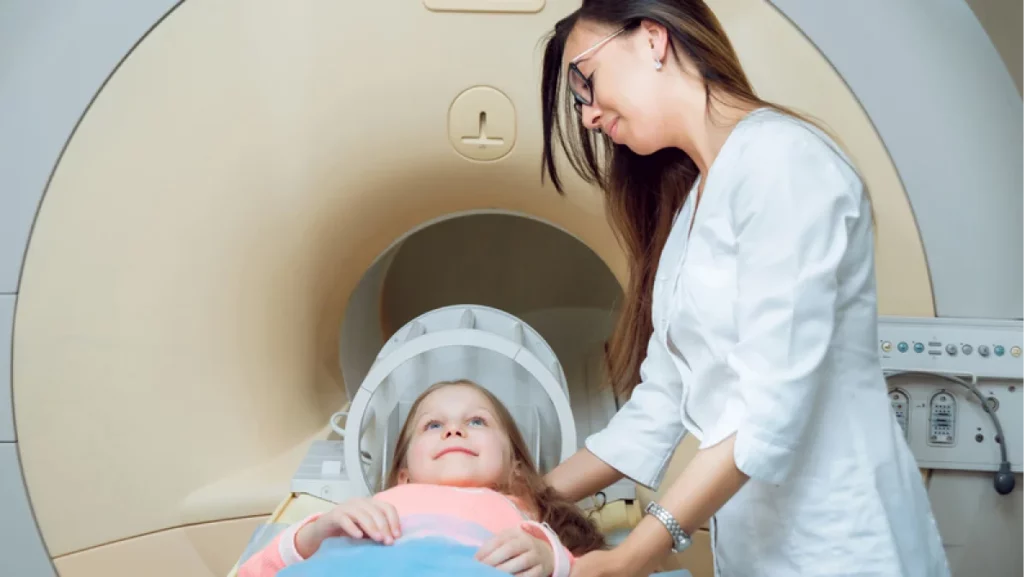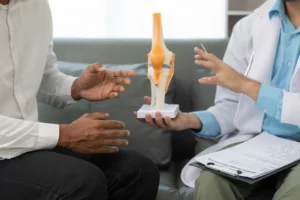Magnetic Resonance Imaging (MRI) is one of the most effective diagnostic tools available today, and it plays a critical role in pediatric healthcare. If your child’s doctor recommends an MRI, you might feel nervous about what the process involves, especially if it’s your child’s first time. The good news is that MRI for children is safe, non-invasive, and often the best way to get clear images of the brain, joints, or internal organs.
Still, a child MRI procedure requires a slightly different approach compared to adult MRIs. From understanding how to prepare a child for an MRI to choosing the right facility, this guide explains what to expect and how to help your child stay calm and comfortable.
What Makes Pediatric MRI Different from Adult MRI?

Pediatric MRI scans are designed with children’s unique needs in mind. While the equipment and imaging technology are the same, the process is tailored to suit children’s comfort levels, attention spans, and sensitivity to noise or unfamiliar settings. Pediatric imaging services often include staff trained in child development, tools for distraction or relaxation, and protocols that reduce anxiety during scanning.
Unlike many adult patients, children may require additional support to stay still for the duration of the scan. In some cases, sedation for children MRI procedures may be recommended if the child cannot remain calm or motionless, which is critical for capturing accurate images.
Reasons a Child Might Need an MRI
Doctors may order an MRI for children to diagnose or monitor a variety of health concerns. These include both sudden symptoms and long-term medical conditions.
Neurological Issues
If a child is experiencing seizures, developmental delays, or unexplained headaches, a pediatric MRI scan of the brain can help identify abnormalities in the nervous system.
Sports Injuries or Joint Pain
Active kids sometimes experience injuries that affect soft tissues, bones, or joints. An MRI for kids can reveal tears, inflammation, or bone bruises that don’t show up on X-rays.
Tumor or Infection Evaluation
An MRI provides clear images of internal structures, making it a key tool for evaluating tumors, cysts, or infections. It can also be used for follow-up if a child is undergoing treatment.
Congenital Abnormalities or Follow-Up Imaging
Some children are born with structural issues that require imaging to track growth or post-surgical healing. Pediatric MRI services offer safe, repeatable scans for long-term care.
How to Prepare Your Child for an MRI
Helping your child feel calm and informed before the scan can make the process smoother for everyone involved. Here’s how to prepare a child for MRI:
Use age-appropriate language to explain the procedure
Talk to your child honestly about what will happen during the MRI scan. Use simple, reassuring words to describe what the machine looks like, how long the test takes, and why staying still is important. Avoid saying the scan will be “fun,” but do let them know it doesn’t hurt. Emphasize that a pediatric MRI scan helps doctors see inside their body to understand what’s going on and how to help.
Schedule a visit to the facility if possible
Touring the imaging center before the scheduled MRI can make a big difference, especially for young children or those who struggle with anxiety. Meeting the staff, seeing the scanner, and learning what to expect from a child-friendly MRI center can reduce fear and build trust. Some facilities also offer mock MRI machines to simulate the experience in a low-pressure setting.
Use books, games, or videos to support visualization
Many children respond well to storytelling or visual aids. You can find age-appropriate books and online videos that explain the child’s MRI procedure in ways they can understand. These tools can normalize the experience and make it feel less intimidating. Encourage your child to ask questions and express any fears they may have.
Dress your child in comfortable, metal-free clothing
On the day of the scan, dress your child in soft, cozy clothes that don’t contain any metal. Avoid zippers, snaps, or sequins, which can interfere with imaging. If needed, your child may change into a hospital gown provided by the facility. Choosing comfortable clothing ahead of time can make the transition into the scanning room easier.
Pack familiar comfort items
A favorite stuffed animal, blanket, or even a parent’s sweater can help a child feel more secure. These items can stay with your child in the waiting area and, in some cases, during the scan itself if they are free of metal. Bringing a comfort item gives your child a sense of control and emotional support during a new experience.
Follow all instructions about eating or drinking before the scan
If the MRI requires sedation, strict food and drink guidelines will apply in the hours before the appointment. Be sure to follow all pre-scan instructions carefully. Skipping these steps can delay or cancel the scan. Preparing your child ahead of time by explaining why they can’t eat or drink also helps them feel included in the process.
Taking these extra steps shows your child that you’re in this together. With a bit of planning and support from a team trained in safe MRI for kids, the experience can be both calm and successful.
What Happens During the MRI Scan?

Understanding what happens during a child’s MRI can help reduce fear and uncertainty. The scan itself is painless, but it requires stillness and patience.
- Your child will lie on a table that slides into a large tunnel-shaped machine
- Technologists will be nearby and can talk to your child through an intercom
- Headphones or earplugs may be used to reduce the sound of the machine
- A contrast dye may be injected if detailed imaging is needed
- The scan takes 20–60 minutes, depending on the area being examined
Sedation or Anesthesia in Pediatric MRI
Not all children need sedation, but it is sometimes recommended for younger patients or those who experience anxiety or discomfort in medical settings. Sedation for children’s MRI services is closely monitored by medical professionals who ensure safety from start to finish. Facilities offering safe MRI for kids will always conduct a risk assessment before recommending sedation or anesthesia.
After the MRI: What to Expect

Once your child completes the pediatric MRI scan, the next steps are typically straightforward. Knowing what happens after the scan can help both parents and children feel more at ease during the process. Here’s what to expect after an MRI for children:
Most children can return home the same day
If the MRI was done without sedation, your child will usually be free to go home shortly after the scan. Many children are able to resume normal activities such as eating, playing, and resting as soon as the scan is finished. The experience is painless, and most facilities focus on providing a safe MRI for kids with minimal disruption to their day.
If sedation was used, short monitoring will follow
For younger children or those with anxiety, sedation may be necessary to ensure they stay still during the scan. In these cases, your child will be monitored closely in a recovery area by trained professionals. Once they are fully awake, responsive, and able to eat or drink, they will be cleared to go home. You’ll receive detailed post-sedation care instructions before leaving the child-friendly MRI center.
The radiologist will interpret the images
After the scan, a specialized radiologist will review the images to look for any abnormalities. These professionals have extensive training in pediatric imaging services and know how to evaluate the scans with attention to the unique characteristics of a developing body. This step ensures the most accurate assessment possible for your child’s condition.
Your child’s doctor will contact you with results and next steps
Once the radiologist’s report is ready, your child’s referring doctor will follow up with you. They’ll explain the results, answer any questions, and guide you on the next steps—whether that means more tests, a referral to a specialist, or simply monitoring the condition over time. This follow-up conversation plays a key role in understanding the outcome of the child’s MRI procedure and supporting your child’s care plan.
Choosing the Right Facility for a Pediatric MRI
Choosing a child-friendly MRI center is just as important as the scan itself. Look for a facility that offers pediatric imaging services, has experience working with children, and uses kid-focused strategies to make the process feel less intimidating.
A center that understands the importance of comfort and communication can make all the difference. Some locations even allow parents to stay in the room, offer special equipment for smaller bodies, and have staff trained in calming techniques to assist children with anxiety.
Where to Go for a Safe and Supportive MRI Experience
One Step Diagnostic is a trusted provider of pediatric MRI scans across Texas, offering a compassionate and professional approach to imaging for children. Our team understands that getting an MRI for children can feel overwhelming for families. That’s why we take extra care to create a calm, welcoming, and safe environment.
From helping parents understand what happens during a child’s MRI to using advanced, non-invasive technology, we’re here to guide you through every step. Our centers are equipped for sedation for children’s MRI services when needed and are experienced in handling everything from routine scans to complex pediatric imaging cases.
Explore our MRI services or learn about our full range of diagnostic imaging services. To schedule an appointment or speak with our team, visit our contact page or browse One Step Diagnostic online.
We are proud to be a trusted provider of MRI for kids with anxiety, joint pain, neurological issues, and many other conditions that call for clear, accurate results. Let us help you make your child’s imaging experience as smooth and stress-free as possible.




